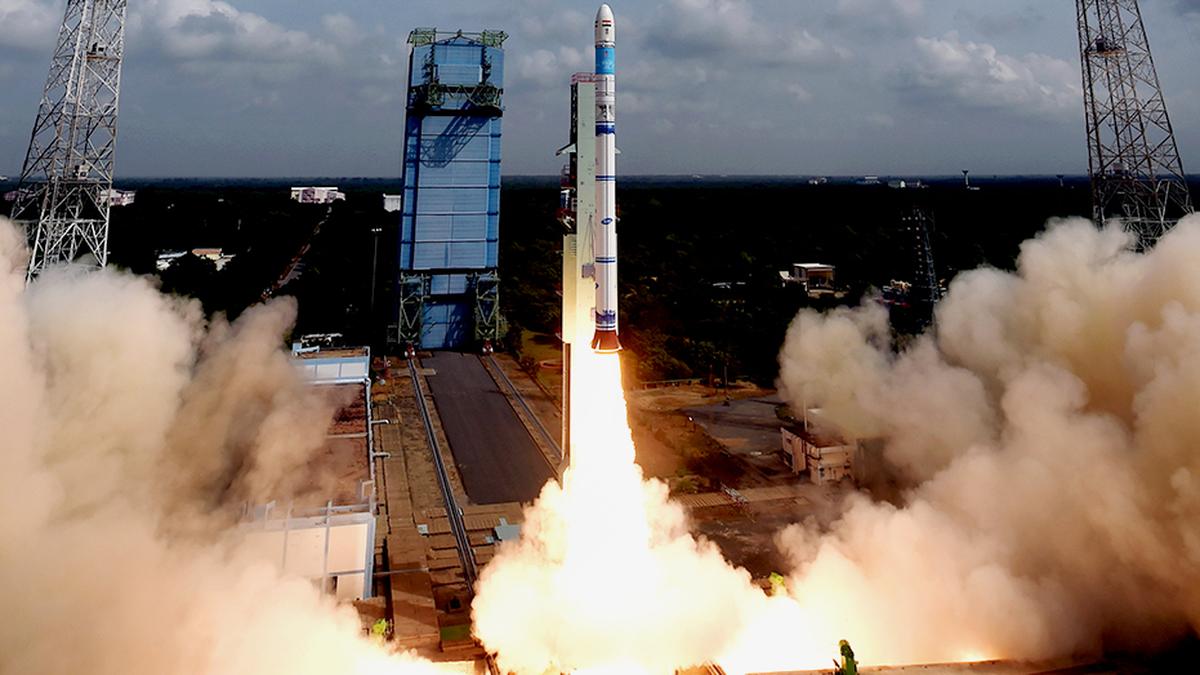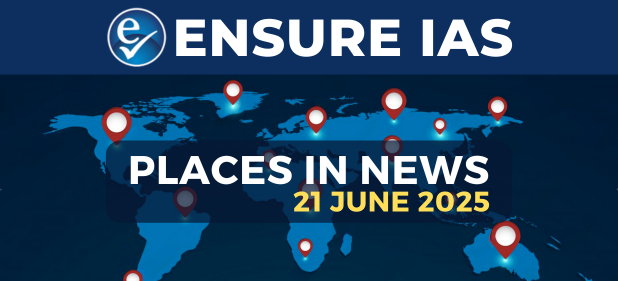- Courses
- GS Full Course 1 Year
- GS Full Course 2 Year
- GS Full Course 3 Year
- GS Full Course Till Selection
- Answer Alpha: Mains 2025 Mentorship
- MEP (Mains Enrichment Programme) Data, Facts
- Essay Target – 150+ Marks
- Online Program
- GS Recorded Course
- Polity
- Geography
- Economy
- Ancient, Medieval and Art & Culture AMAC
- Modern India, Post Independence & World History
- Environment
- Governance
- Science & Technology
- International Relations and Internal Security
- Disaster Management
- Ethics
- NCERT Current Affairs
- Indian Society and Social Issue
- NCERT- Science and Technology
- NCERT - Geography
- NCERT - Ancient History
- NCERT- World History
- NCERT Modern History
- CSAT
- 5 LAYERED ARJUNA Mentorship
- Public Administration Optional
- ABOUT US
- OUR TOPPERS
- TEST SERIES
- FREE STUDY MATERIAL
- VIDEOS
- CONTACT US
The eastern states have a big role in India's development aim
The eastern states have a big role in India's development aim
25-08-2024

The eastern states of India—Andhra Pradesh, West Bengal, Odisha, Bihar, and Jharkhand—are crucial to India’s goal of becoming a developed nation by 2047.
- Despite their potential due to rich resources and strategic locations, these states lag in economic and social development.
- Addressing these disparities is vital for balanced national growth and achieving long-term development goals.
Challenges Limiting Development
Economic Factors:
- Underdeveloped Industrial Sector: Historically neglected, the industrial base in these states is weak due to inadequate infrastructure and investment. This limits job creation in the formal sector and forces reliance on agriculture and informal jobs.
- Freight Equalisation Policy (1952): Aimed to equalize transportation costs across India, this policy inadvertently harmed eastern states by reducing incentives for local industrial development near mineral resources, leading to underdevelopment in these areas.
- Low Social Progress: Eastern states rank poorly in the Social Progress Index (SPI). Andhra Pradesh, West Bengal, and Odisha are in Tiers 4 and 5, indicating low social progress, while Bihar and Jharkhand are in Tier 6, showing very low performance in social indicators.
Social & Human Development Issues:
- Low Literacy Rates: States like Bihar and Jharkhand suffer from low literacy rates, which hampers skill development and limits economic opportunities. This educational gap perpetuates a cycle of low-skilled labor and economic stagnation.
- High Poverty Rates: Persistent poverty impacts social mobility and economic advancement, trapping many in cycles of poor health and limited economic opportunities, exacerbating intergenerational poverty.
Historical & Geographical Factors:
- Colonial Legacy: The exploitation during British rule left these states with minimal industrial development and infrastructure. The legacy of resource extraction without investment in local development has led to ongoing economic challenges.
- Geographical Isolation: The challenging terrain and dense forests in many areas lead to poor connectivity, which restricts market access and integration with more developed regions, impeding economic growth.
- Vulnerability to Natural Disasters: Frequent cyclones, floods, and droughts disrupt economic activities and infrastructure development. For example, West Bengal and Odisha face severe cyclones, while Bihar regularly experiences destructive floods, undermining development efforts.
Governance & Political Challenges:
- Political Instability: Frequent changes in state governments and policies disrupt long-term development planning, leading to inconsistent policies and abandoned projects.
- Competitive Federalism: Richer states attract more investment and skilled labor, widening the development gap as poorer states struggle to compete. This exacerbates existing inequalities.
- Corruption and Bureaucratic Inefficiency: Corruption and inefficiencies in administration reduce the effectiveness of development programs and deter investment.
- Naxalite Insurgency: The ongoing Naxalite insurgency in certain areas creates security challenges, deterring investment and diverting resources away from development efforts to security concerns.
Current Economic Landscape
- GDP Overview: The eastern region’s combined GDP was USD 579 billion in 2022-23, an increase from USD 185 billion in 2011-12. However, its share of India’s total GDP has remained around 17%, indicating slow growth relative to national targets.
- Growth Projections: If the region grows at 9% annually, its GDP could reach USD 5 trillion by 2047. At a 5% growth rate, it would only reach USD 1.8 trillion, highlighting the urgent need for policy reforms to accelerate growth.
Government Initiatives
- Purvodaya: Announced in Budget 2024-25, this initiative aims to transform the eastern states into a growth engine through:
- Industrial Development: Establishing industrial hubs, such as in Gaya, under the Amritsar Kolkata Industrial Corridor, integrating cultural heritage with modern development.
- Road Connectivity Projects: Enhancing infrastructure with major road projects like the Patna-Purnea Expressway and Buxar-Bhagalpur Expressway, and additional bridges over the River Ganga.
- Power and Infrastructure Projects: Investments in a new 2400 MW power plant in Bihar and additional infrastructure projects including new airports, medical colleges, and sports facilities.
- Andhra Pradesh Reorganization Act: Includes:
- Special Financial Aid: Rs 15,000 crore for capital development through multilateral agencies.
- Polavaram Irrigation Project: Completion support to enhance food security.
- Infrastructure Investments: Development of nodes on the Visakhapatnam-Chennai and Hyderabad-Bengaluru Industrial Corridors, and grants for backward regions.
- Pradhan Mantri Janjatiya Unnat Gram Abhiyan: Targets socio-economic improvement for tribal communities across over 63,000 villages, benefiting 5 crore tribal people.
- Bringing Green Revolution to Eastern India (BGREI): Supports agricultural productivity with aid for seed production, soil management, pest control, and post-harvest marketing in seven eastern states.
- Urja Ganga Gas Pipeline Project: Aims to provide clean fuel to Bihar, Jharkhand, West Bengal, and Odisha.
- Controlling Naxalism: The SAMADHAN Doctrine and Rehabilitation Policy have reduced left-wing extremism-related violence by 76% since 2010.
Strategies for Development
- Economic Growth Initiatives: Invest in infrastructure and connectivity, attract private investments, and promote industrialization. Projects like the Eastern Dedicated Freight Corridor can improve goods movement and lower costs, enhancing attractiveness for industries.
- Social Development Focus: Implement comprehensive skill development programs and improve health and education. Expanding schemes like Ayushman Bharat and Sarva Shiksha Abhiyan can address health and educational disparities.
- Labor Market Improvements: Increase labor force participation, particularly among women, and support entrepreneurship and small businesses. Successful microfinance programs and initiatives like Start-Up India can stimulate job creation and economic growth.
- Cooperative Federalism: Enhance collaboration between central and state governments to effectively address regional disparities and share resources and expertise.
- Governance and Policy: Strengthen local governance and ensure effective implementation of development programs. Successful schemes like Krushak Assistance for Livelihood and Income Augmentation (KALIA) and Kanyashree Prakalpa serve as models for effective policy and governance.
- Addressing Regional Disparities: Intensify efforts to promote equitable development and address social and economic imbalances within the region. Policies that improve social indicators and boost economic growth are essential.
- Realizing Potential: Leverage the region’s mineral resources and strategic locations to drive economic growth. Developing industries like steel and cement can significantly contribute to national industrial output.
- Boosting MSMEs: Improve access to financing and credit facilities for micro, small, and medium enterprises (MSMEs), and foster a supportive business environment through streamlined regulations and better infrastructure.
Conclusion
Reviving eastern India is pivotal for India’s journey to becoming a developed nation by 2047. By harnessing the region’s vast resources and addressing key challenges through targeted policies and investments, eastern states can become significant contributors to national growth. Prioritizing their development will ensure a balanced and sustainable path to achieving India's economic goals. The coming years will be critical in bridging the development gap and aligning the growth of these states with national objectives, making their success a cornerstone of India's future prosperity.
Must Check: Best IAS Coaching In Delhi
UPSC Prelims Result 2024 Out: Expected Cut Off & Other Details, UPSC Prelims 2024 Answer with Explanation, Daily Prelims Quiz, Daily Current Affairs, MONTHLY CURRENT AFFAIRS TOTAL (CAT) MAGAZINE, Best IAS Coaching Institute in Karol Bagh, Best IAS Coaching Institute in Delhi, Daily Mains Question Answer Practice, ENSURE IAS UPSC Toppers, UPSC Toppers Marksheet, Previous Year Interview Questions, UPSC Syllabus




